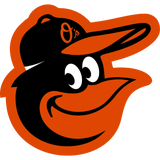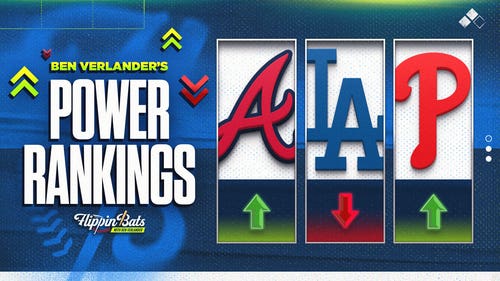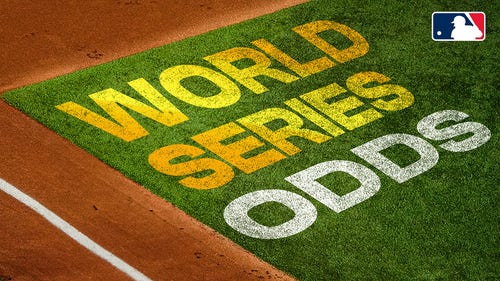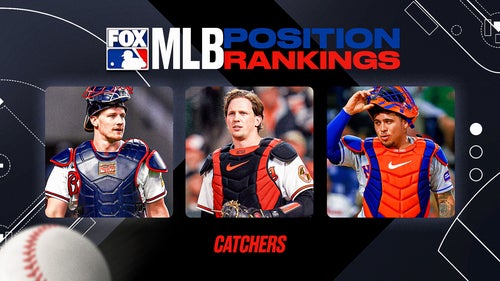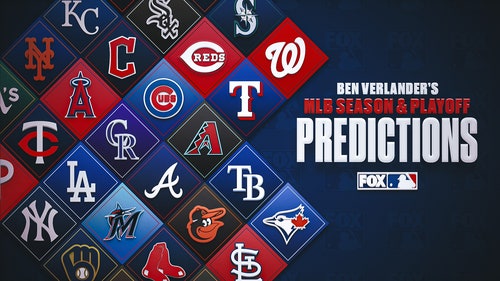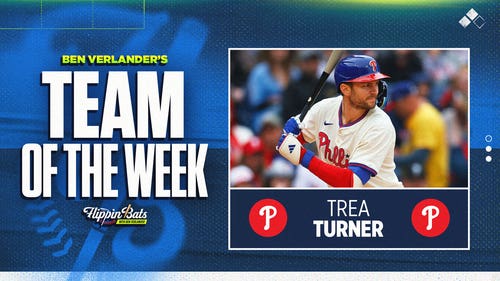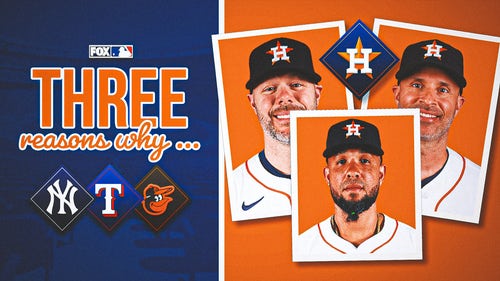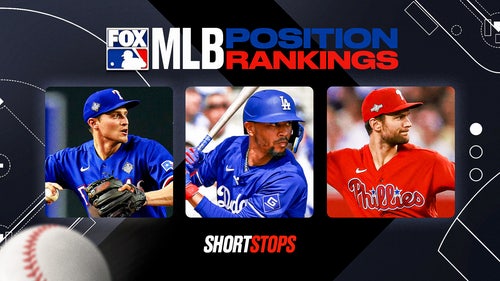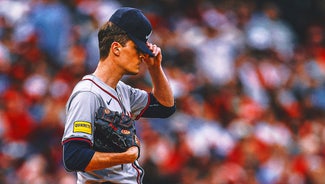
A look at the #4 overall picks in the MLB Draft in the 2000s

Brad Mills-USA TODAY Sports
Monday, June 12 is the MLB Draft. Who were the best players taken with the fourth pick in the 2000s?
In just six days, on June 12, the MLB Draft will begin. We will have a live thread that evening here at Call to the Pen with instant analysis of the selections from our own Benjamin Chase throughout the first night.
As we prepare for the draft, here is the schedule for some draft information to get you ready for the big day when the MLB draft kicks off next Monday night:
Monday, June 5 – A look at the #5 picks of the 2000s
Tuesday, June 6 – A look at the #4 picks of the 2000s
Wednesday, June 7 – Mock Draft 6.1
Thursday, June 8 – A look at the #3 picks of the 2000s
Friday, June 9 – A look at the #2 picks of the 2000s
Saturday, June 10 – A look at the #1 picks of the 2000s
Sunday, June 11 – Final Mock Draft: What Ben Would Do
Monday, June 12 – Live Draft Thread!
2005. Ryan Zimmerman, 3B, Washington Nationals, 36.3 bWAR
In a draft with excellent talent in the top 10-12 picks (12 players in the first round have produced 10+ bWAR, and 6 have produced 30+ bWAR), the Nationals got the most immediate impact from their selection, as Zimmerman went from the University of Virginia to low-A, to AA, to the big league club by the end of 2005, and he showed no worse for the wear, posting a .988 OPS in the big leagues in 62 plate appearances.
Considered an elite defender, Zimmerman's bat was quite productive immediately, producing an .822 OPS, 47 doubles, 20 home runs, 110 RBI, and 11 steals in his rookie 2006 season.
Zimmerman was a consistent producer until a shoulder injury really hurt his production in the 2014 season. A shift to first base still didn't bring back his bat, but after some offseason strengthening work, a clean bill of health, and some notable adjustments in his swing, he's been absolutely crushing the ball in 2017, with a .372/.417/.704 line.
On his career, Zimmerman has made one All-Star game (2009), won the 2009 NL Gold Glove, and won Silver Slugger awards in 2009 and 2010. He's tallied a .281/.345/.475 career line with 231 home runs.

Jerry Lai-USA TODAY Sports
Mike Stodolka, LHP, Kansas City Royals, no major league experience
The only #4 selection from 2000-2012 who did not reach the majors, Stodolka was a two-way player out of high school with excellent stuff and a big bat. As most guys with arms good enough to be selected this early in the draft, Stodolka was a primary pitcher until after it was clear that pitching wouldn't work out, when he moved to the plate.
Stodolka leaped up draft boards his senior year when he struck out 111 in 52 innings in a good California high school league and seeing his fastball tick up to the low-90s after topping out in the upper 80s before his senior year. He also offered two above-average secondary pitches and a good 6'2″ frame, leading to thoughts that he could not only be successful, but be a guy who moved quickly through the minor leagues out of high school. That he was willing to cut a financial deal for the Royals helped him jump all the way from the mid-first round to #4.
In his draft season, he worked all the way up to low-A after showing very well with the Royals' GCL team. However, that's where he would stall for the next two seasons, not able to show the ability to control his stuff after a pair of shoulder injuries early in his career that eventually led to him making the switch to a full-time hitter in 2006.
Stodolka just couldn't drive upper-level breaking stuff, and even though he posted solid contact and OBP numbers in AAA at 26, he was done with organized baseball after that season.
Gavin Floyd, RHP, Philadelphia Phillies, 15.9 bWAR
Well-built with good control of multiple pitches, Floyd was a solid selection when the Phillies took him #4 in 2001. He opened his first season in low-A and showed right away that he was ready for a professional workload, throwing 166 innings for Lakewood. That performance led to Floyd's peak ranking as a prospect as Baseball America ranked him the #9 overall prospect that offseason.
In 2003, he didn't show as well with strikeouts, so he dropped down to #23, but he still had a 3.00 ERA in high-A as a 20-year-old. Then in 2004, he jumped all the way to the major leagues after passing through AA and AAA, throwing 28 1/3 innings for the major league club that season.
Floyd spent the next two seasons bouncing between Philadelphia and AAA Scranton/Wilkes-Barre, but he could not establish himself in the major leagues. After 2006, he was traded with Gio Gonzalez to the Chicago White Sox for Freddy Garcia, and that really kick started his career.
After splitting time between AAA and the majors with the White Sox in 2007, Floyd established himself as a consistent mid-rotation starter for the White Sox for the next 5 seasons. From 2008-2012, Floyd averaged 31 starts and 190 innings per season, with a 4.12 ERA, 1.27 WHIP, and a 108 ERA+, posting an average 59/151 BB/K ratio.
However, in 2013, Floyd injured his shoulder, and he's never been the same. Attempts to return have shown some promise, as his 2014 season with Atlanta (9 starts, 2.65 ERA, 1.25 WHIP before breaking his elbow), but he has struggled with injury each time.
Adam Loewen, LHP, Baltimore Orioles, -0.2 bWAR
A big Canadian left-handed arm, Loewen was considered the clear #1 high school lefty on the board in the 2002 draft. While a number of collegiate lefties were solid and turned in good MLB careers (nevermind the high school righties that had success behind him), Loewen wasn't a pick that could really be argued at #4, as he was a guy who was legitimately thought to be in play from #1 on in the draft.
Built well at 6'6″ tall and 220+ pounds at draft time, Loewen remained a good athlete as he filled out another 20-30 pounds over his career, and he was able to eventually work his way to the majors as both a pitcher and hitter, which is a very rare group in the modern game.
Loewen threw very well in the New York-Penn League and was very impressive in fall instructs in 2003 in his first professional season, and his pre-draft reputation combined with that performance had him rated the #13 overall prospect in all of baseball.
Loewen worked up the Orioles system step by step showing struggles with command as he did until 2006, when he was able to jump all the way to the majors on the strength of his best walk rate of his minor league career. He struggled with that command once he got to the major leagues, however, and this ended up being Loewen's last healthy season as a pitcher in the Orioles system.
After trying for two seasons to get back to the majors and stay healthy, the Orioles let him go, and he signed with the Blue Jays to re-start his career as an outfielder. After predictably struggling in his first full time hitting after not doing so in a half dozen years, Loewen really picked up his hitting in his second year in the Blue Jays organization, and by 2011, he'd made the major leagues as an outfielder. He spent the next two seasons attempting to find a major league bench role, but struggled to break out of AAA in the Blue Jays and Mets organizations.
He then signed with the Phillies, and at 30 years old, he returned back to the mound. After a season starting with the Phillies, he was moved to the bullpen, and he found his way back to the major leagues again in 2015, having now made the majors as a pitcher, re-made himself as an outfielder and made the majors, then gone back to pitching and reached the majors again. Last season he spent much of his season in AAA with the Arizona organization, getting 8 games at the major league level. He's worked between AA and AAA with the Rangers this year.
Loewen is a very unique guy just in the fact that he has never given up on his dream, being willing to do whatever it took to get back there – and he had the talent to get to the major leagues multiple ways, something extremely unique.
Tim Stauffer, RHP, San Diego Padres, 5.5 bWAR
Initially drafted out of high school in the 36th round, Stauffer instead went to the University of Richmond and was drafted fourth overall. His mature repertoire was his calling card, and he was expected to move quickly, even if his ceiling wasn't tremendously high.
Stauffer followed that path all the way to AAA in his first professional season in 2004, and he split 2005 between AAA and the major leagues. However, Stauffer struggled to take his mediocre stuff to the next level as he struggled to control it, and he rode that AAA/MLB train, outside of a season missed for Tommy John surgery, until 2011.
Stauffer had his best season in 2011 for the Padres, making 31 starts, throwing 185 2/3 innings with a 3.73 ERA, 1.26 WHIP, and 53/128 BB/K ratio. The next season, the now 30-year-old Stauffer struggled with injury. He moved to the bullpen permanently and threw 134 relief innings over the next two seasons for San Diego.
The Padres let him go after 2014, and he could never produce with his new team, struggling with the Twins until he was released in early June. He found his way to an independent league team in July before the Mets signed him for the rest of the season. He's not made another appearance in minor or major league baseball since.
Jeff Niemann, RHP, Tampa Bay Devil Rays, 4.1 bWAR
One of the guys who would help to solidify the reputation of the overuse of Rice pitchers hurting their pro prospects that has followed the school to this day. Niemann, after all, seemed to be the one guy you couldn't overwork. Standing 6'9″ and 275-285 pounds of solid build, Niemann was set up as a guy who could handle the physical rigors of plenty of work when he was selected #4 in 2004.
Even without pitching an inning professionally, Baseball America ranked him #20 overall as a prospect before the 2005 season, and that's as high as they ever rated Niemann. The Rays pushed Niemann aggressively, starting him with their high-A club, and he finished the season with AA, though he had his first experience of the injury bug.
He rebounded with roughly a half-season of excellence in AA in 2006, and that got him his one ranking on Baseball Prospectus' list at #25, while he was #35 at the time with BA. In 2007 and 2008, he stayed healthy the whole season and worked his way to the big league club for 16 September innings in 2008. He was a key member of the rotation for the Rays in 2009-2011 before an injury in 2011 cut things short.
He attempted to come back, but Niemann could never get back on the mound consistently for the Rays in 2012, and at 29, he was done as a pitcher.
Brad Lincoln, RHP, Pittsburgh Pirates, 0.5 bWAR
A big-armed Texas righty, in spite of a smaller frame, Lincoln chose to attend the University of Houston rather than sign with the Rangers after being selected in the 28th round. The Pirates selected him fourth overall after a productive career with Houston. He came out and showed excellent stuff in his draft season, striking out 19 in 23 2/3 innings and making it to low-A.
However, after feeling some pain in his elbow at the end of the season, Lincoln found he needed Tommy John surgery. He missed all of the 2007 season, and his arm was never the same, not able to get quite the same snap on his pitches or the same level of velocity.
He worked up the Pirates system in 2008 and 2009, making his major league debut in 2010. The Pirates ended up moving him to relief in 2012, where he thrived with the Pirates before being traded to the Blue Jays.
He spent a season up and down with the Blue Jays and their AAA club before going to the Phillies organization, where they attempted to make him a starter again, and that didn't work well. He made his last appearance as a long reliever for the Pirates AAA club in 2015 at age 30.
Daniel Moskos, LHP, Pittsburgh Pirates, 0.2 bWAR
The second of three Pirates #4 selections in 4 seasons, Moskos was the second consecutive college pitcher, though many were curious about this pick before Moskos ever threw a pitch. While Moskos had a very good collegiate career, he had minimal upside as a professional and was viewed as a college starter type that typically doesn't go early in drafts, leading many to believe that Moskos was a financial pick. While in the end many of the top pitchers in the 2007 draft didn't pan out, many had higher upsides.
Moskos struggled in his draft season, throwing from the bullpen after a full college season of innings already on his arm. He was pushed up to high A Lynchburg in the Carolina League for his first full-season team. He ended up posting a 5.95 ERA over 110 1/3 innings.
While he threw better in 2009 at AA, the Pirates moved Moskos to the bullpen permanently in 2010. He jumped up to the major leagues by 2011 and showed well as a reliever in 2011, but that would end up being his only major league experience as Moskos' wasn't able to show the ability to get swing and miss as a reliever, throwing for three more seasons in the minor leagues before heading to independent leagues.
Moskos spent all of 2015 in independent leagues before returning to the minor leagues in 2016 with the Padres organization. He's back in an independent league this season.
Brian Matusz, LHP, Baltimore Orioles, 2.7 bWAR
A very elite prospect coming out of high school, Matusz went to college at the University of San Diego rather than signing with the Angels, who selected him in the fourth round. It paid off as he was drafted fourth overall in 2008.
While he didn't throw in the minor league regular season, Matusz went to the Arizona Fall League in his draft season and held his own against the best prospects in the game, which led to him being considered very highly among prospect ranking services, ranking #25 with Baseball America and #19 with Baseball Prospectus.
Matusz moved up quickly to Baltimore in 2009, throwing 113 minor league innings before throwing 44 2/3 major league innings with Baltimore. He jumped all the way to the #5 overall prospect with BA and #18 with BP.
Matusz made 32 starts with Baltimore in 2010. That would end up being the most he'd make in the major leagues. Baltimore moved him into the bullpen in the 2013 season, and he worked well as a lefty reliever for three seasons for the Orioles before completely falling apart due to injury before the 2016 season. The Orioles had to package a competitive balance draft pick along with significant money to dump Matusz, who was then immediately released by the Braves.
Picked up by the Cubs, Matusz only made one major league appearance with the Cubs. He signed with the Diamondbacks in the offseason on a minor league contract, and he's posted a 6.11 ERA in 17 2/3 relief innings for AAA Reno.
Tony Sanchez, C, Pittsburgh Pirates, 0.4 bWAR
The Pirates' 3rd #4 selection in four seasons, Sanchez was a polished catching prospect out of college in Boston College. While the 2009 draft will be remembered for Mike Trout, the Pirates were looking for college hitting, and Sanchez was the presumed second-best of a weak crop of college hitters behind just Dustin Ackley, who went two picks ahead to the Mariners.
Unlike many college hitters, there is not the same expectation that a college catcher will move quickly through the minor league system as it still takes time for a college catcher to learn the nuances of catching professional pitchers along with keeping the bat working.
However, Sanchez made a big splash right away, hitting .309/.409/.539 and climbing to high-A in his draft year and then after injury hitting .314/.416/.454 in 2010 with high-A. That solid performance with the bat on top of what was perceived to be a high level of defensive competence as a catcher led to Sanchez being ranked as high as #46 in prospect lists (Baseball America).
Sanchez didn't have the same level of hitting success in 2012 in AA/AAA, but still posted a .739 OPS. In 2013, he again hit very well in AAA, with a slash line of .282/.358/.487 in AAA before earning a late season promotion with the Pirates.
Over the next two seasons, Sanchez rode the AAA/MLB train behind very good defensive starting catchers in Pittsburgh, but his bat seemed to take a step backward in AAA over that time.
The Pirates released him before the 2016 season, and Sanchez has been a member of three organizations (the Blue Jays, Giants, and Angels) since. He's still not hitting well, but continues to have the reputation of a capable defender behind the plate.
Christian Colon, SS, Kansas City Royals, 1.9 bWAR
Drafted out of high school in the 10th round, Colon chose instead to go to college at Cal State-Fullerton and was selected fourth overall by the Royals in 2010. While a good and deep draft in many aspects, the 2010 draft was shallow in college hitting, and that was the Royals focus, an example of a team focused in one area possibly missing out on the best available player at their draft slot.
While many questioned the selection, Colon's performance when jumped up to high-A in his draft year did plenty to dissuade the doubters, and he was ranked as the #51 prospect by Baseball America and #88 prospect of Baseball Prospectus.
However, Colon was exposed when he reached AA the next season, posting a .667 OPS. He struggled through injury the next season and has shown a better ability to contact the ball, but in general has shown that his contact ability is fairly empty contact without much in the way of power or speed, and his defense moved him almost immediately off of shortstop to second base, then third base.
Colon made his major league debut in 2014, and he's bounced between AAA and KC the last two seasons, but after attempting for multiple seasons to find a major league role for Colon, the Royals DFA'd Colon and attempted to place him on waivers. He was claimed by the Miami Marlins.
Dylan Bundy, RHP, Baltimore Orioles, 4.3 bWAR
Seeing Bundy in high school is the stuff of legend. A high school righty out of Oklahoma, he is often considered the best high school pitcher that long-time scouts have ever seen, and this season as the discussion about Hunter Greene going #1 overall has come into play, Bundy's exploits as a high schooler have come into mind again.
After being drafted, Bundy did not even throw a single pitch, and yet, the prospect rankers viewed him favorably due to his reputation, with Baseball America ranking him #10 in their top 100, MLB Pipeline having him #10, and Baseball Prospectus having him #6.
His legend reached epic proportions when as a 19-year-old, he ascended from low-A (8 games, 0.00 ERA, 2/40 BB/K in 30 IP) to AA before making two relief appearances for the Orioles in 2012. BA and MLB Pipeline had him #2 overall on their rankings, and BP had him #4.
Then Bundy's elbow popped. When he was able to be on the mound, he was elite, but a collection of injuries prevented that, including Tommy John surgery that cost him all of the 2013 and a large chunk of the 2014 season.
Coming into 2016, it was hard to know what Bundy would have. Out of options, Bundy had to remain with the major league team, and they used him initially out the bullpen to save his arm. As the season wore on, however, he was stretched out more and more, eventually working into the Orioles rotation and showing very well.
This season, Bundy has stepped forward as the rotation leader for the Orioles, posting 76 2/3 innings in 12 starts with a 2.93 ERA, 1.14 WHIP, and 21/53 BB/K ratio. After all the injury issues he's gone through it's easy to forget that Bundy is still just 24 years old for the entire 2017 season.
Kevin Gausman, RHP, Baltimore Orioles, 5.9 bWAR
A 6th round selection out of high school by the Dodgers, Gausman chose instead to attend LSU, and it paid off substantially as he went #4 overall in 2012. While there was some debate at the time whether Gausman, Mark Appel, or Kyle Zimmer was the best college pitcher in the draft, Gausman was the guy many scouts believed had the best future as a major league starter.
The Orioles challenged him in his draft year, sending him to the New York-Penn League and then all the way up to the high-A Carolina League for a few starts. He showed well enough that, along with his pre-draft pedigree, he was ranked #26 by Baseball America in the offseason, #37 by MLB Pipeline, and #13 by Baseball Prospectus.
Gausman would ascend quickly to Baltimore, reaching the major leagues in 2013 for a significant share of innings, barely retaining rookie eligibility after throwing 47 2/3 innings at the big league level after 82 minor league innings, and he bumped up even more in rankings, to #20 for BA, #31 for MLB Pipeline, and #10 for BP.
Gausman opened 2014 in AAA Norfolk, but after 11 starts, he moved into the Baltimore rotation and acquitted himself quite well over 20 starts, throwing 113 1/3 innings, with a 3.57 ERA, a 1.32 WHIP, and a 38/88 BB/K ratio.
He's been a primary member of the Orioles rotation ever since, though he's fought off an injury each of 2015 and 2016. In 2015, the injury cost him multiple weeks in the middle of the season, while in 2016, he still was able to make 30 start on the season.
Expected to take a big step forward this season, Gausman has struggled instead, posting a 5.92 ERA over 12 starts and 59 1/3 innings with a 1.84 WHIP and a 27/42 BB/K ratio.
Kohl Stewart, RHP, Minnesota Twins, no major league experience
Wanting to change their organizational reputation as a soft contact focused team with no punch in its pitching, the Twins had their eye on University of Oklahoma righty Jon Gray, who went one pick ahead of them. The team spun on its collective heels and chose the top high school fire baller instead in Stewart.
Stewart was an elite athlete, recruited to Texas A&M to play quarterback (as Johnny Manziel's back up) and pitch. He had a fastball that could reach up to 96 with physical projection and athleticism that allowed one to believe that he could add even more velocity along with a power slider that already drew plus ratings with some giving it double-plus projection.
Stewart threw with the two Twins rookie teams, in the GCL and Appy League, in 2013, posting a 1.35 ERA and a 4/24 BB/K ratio over 20 innings. His performance and athleticism had him rated well, ranked #52 by Baseball America, #40 by MLB Pipeline, and #54 by Baseball Prospectus.
Stewart spent 2014 with low-A Cedar Rapids in the Midwest League. He threw 87 innings with a 2.59 ERA, a 1.14 WHIP, and a 24/62 BB/K ratio. That led to MLB Pipeline bumping him up to #36 and BP bumping him up to #28.
Stewart, however, hasn't seen the fastball tick up in the way the Twins had hoped. In fact, he's really developed as a sinker/slider pitcher, not drawing a ton of swing and miss. While that has value, it is not what the Twins were hoping for when they selected Stewart. This season, Stewart is struggling with his control, and it's led to a 5.62 ERA, 2.00 WHIP, and 22/14 BB/K over 24 innings at AA.
Kyle Schwarber, C, Chicago Cubs, 0.3 bWAR
While perhaps not a catcher long-term, and many knew that, it was hard to deny the monster bat that Indiana University's big catcher had in the 2014 draft, and while many like to praise the Cubs for picking Schwarber, the fact is that he was a signability pick, drafted because he'd take less money and allow them to select other high end players in that year's draft. The Cubs used three college selections in their first three picks to allow them to pursue high school players that fell due to signability concerns, like Carson Sands, Justin Steele, and Dylan Cease.
Of course, when Schwarber came out and hit .344/.428/.634 across three levels in his draft season, many saw him as another Cubs success pick after they'd succeeded with Kris Bryant the season prior. Schwarber was ranked accordingly, rated as high as the #19 prospect (Baseball America).
In 2015, the Cubs saw Schwarber hit well in AA and AAA, they pushed him up to the major league level. If you combine his major league and minor league numbers, he hit 32 home runs combined in 2015, though the Cubs began working him in left field to find ways to get his bat into the lineup.
Schwarber is not the most athletic guy, and he ended up tearing up his knee in the first game of the season, though he made a return for the playoff run of the Cubs last season as they won the World Series.
Schwarber's swing has not been the same since his injury to his knee, and it's shown up this season, as he's hitting .162/.289/.346 on the year for the Cubs with a 30%+ strikeout rate.
Dillon Tate, RHP, Texas Rangers, no major league experience
Projected as high as the #1 overall selection, the Rangers were happy to see Tate fall to them at #4 overall in 2016 out of UC-Santa Barbara. He had electric stuff, and though he was quite lean, he had a frame that could project well, even with a funky delivery.
Tate made 6 appearances in his draft year, posting a 1.00 ERA and 0.67 WHIP, which helped to encourage rankings as he was rated #69 by Baseball America, #36 by MLB Pipeline, and #59 by Baseball Prospectus.
Tate opened with the Rangers' low-A affiliate in the South Atlantic League, where he struggled mightily. Then he was the primary piece acquired for Carlos Beltran in a midseason deal from the Rangers to the Yankees. The Yankees put him into the bullpen, and immediately some of the concerns with his velocity dropping and his off-speed stuff not playing as well seemed to dissipate.
Tate then put together an impressive Arizona Fall League out of the bullpen, with an impressive 1/11 BB/K ratio over 9 1/3 innings.
The Yankees reported over the offseason their intention to use Tate as a starter this season, but he's not been on the mound this season due to a shoulder injury.
Riley Pint, RHP, Colorado Rockies, no major league experience
Readers of Jeff Passan's tremendous book The Arm know plenty about Riley Pint. He's been a guy well known by the showcase circuit due to his elite fastball and multiple breaking pitches, projected as one of the top picks in the 2016 draft for two summers.
More from Call to the Pen
Pint was rumored heavily at #3 to the Braves before the draft, so to have him available for the Rockies in a seeming system-wide emphasis on velocity and "stuff" that has served the team very well as their 2017 young rotation has shown was a boon for Colorado.
Pint is known for his triple digit fastball, but it's not just velocity, as his fastball has movement on the pitch, and he offers a curve and slider that have both been graded as plus by evaluators when they're on their best. His change is the pitch with the most work in progress, but it may be best off-speed pitch when it's on.
A two-sport athlete in basketball and baseball until his senior year of high school, Pint is athletic on the mound, and though he struggles as many young fire-balling pitchers do with control, he has the athleticism to dream on a positive result in repeatable delivery as he grows into his 6'4″ frame.
Pint has posted a 4.29 ERA over 35 2/3 innings with low-A Asheville this season, and while his strikeout rate hasn't been what many would like, he's shown excellent composure in game, especially in a fairly hitter-friendly environment for what is primarily a neutral or even pitcher-friendly league.
